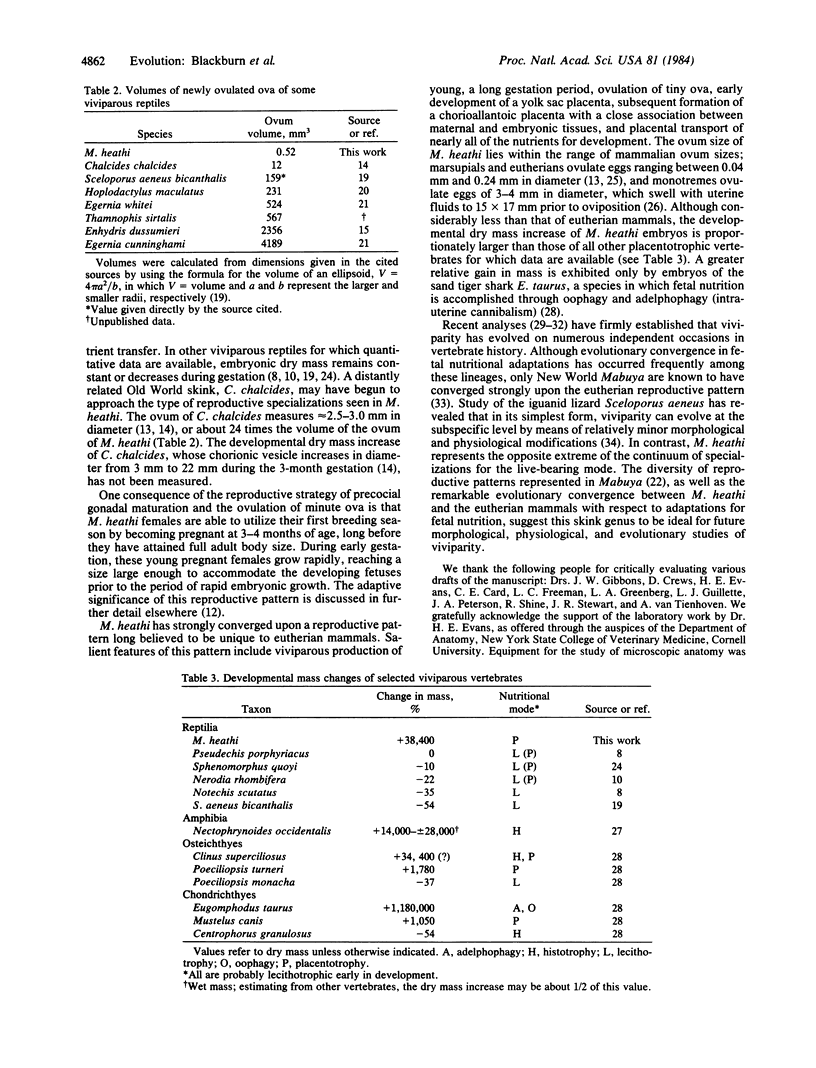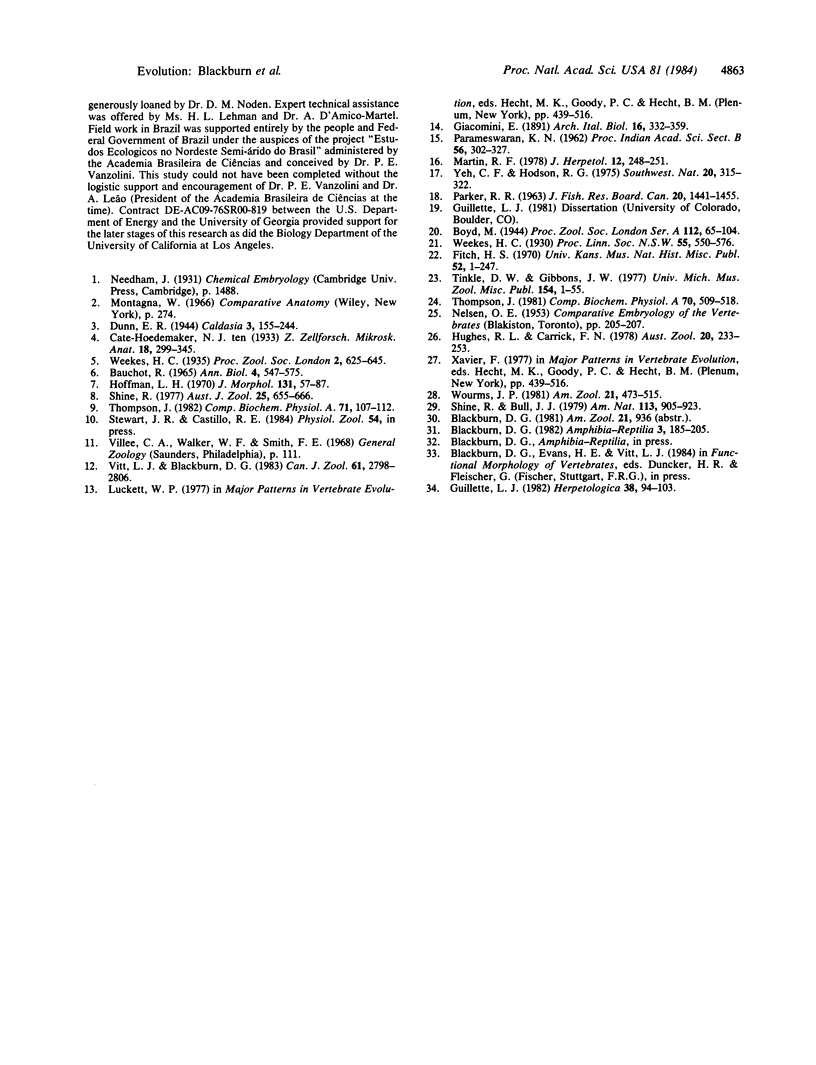Abstract
The viviparous Brazilian scincid lizard Mabuya heathi exhibits a suite of reproductive specializations widely believed to be confined to the eutherian mammals. This skink ovulates the smallest known reptilian egg (≃1.0 mm in diameter). Placental transport accounts for >99% of the dry mass of the periparturient fetus, representing a degree of placentotrophy proportionately greater than that reported in any other non-mammalian vertebrate. Placental morphology and the timing of fetal growth implicate the chorioallantoic placenta in maternal-fetal nutrient transfer. The yolk sac placenta regresses prior to any major increase in embryonic dry mass. Precocial gonadal maturation and postponement of reproductive investment until well after ovulation enables females to become pregnant at 3-4 months of age, long before attainment of full adult body size.
Keywords: placenta, embryology, convergent evolution, reproductive strategy, lizard
Full text
PDF



Images in this article
Selected References
These references are in PubMed. This may not be the complete list of references from this article.
- Bauchot R. La placentation chez les reptiles. Annee Biol. 1965 Sep-Oct;4(9):547–575. [PubMed] [Google Scholar]
- Hoffman L. H. Placentation in the garter snake, Thamnophis sirtalis. J Morphol. 1970 May;131(1):57–87. doi: 10.1002/jmor.1051310105. [DOI] [PubMed] [Google Scholar]








